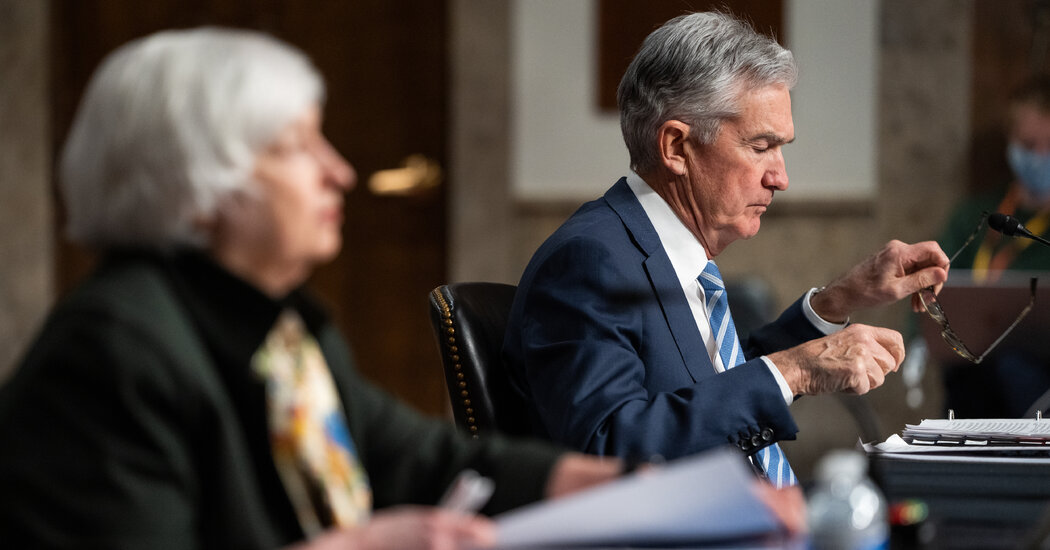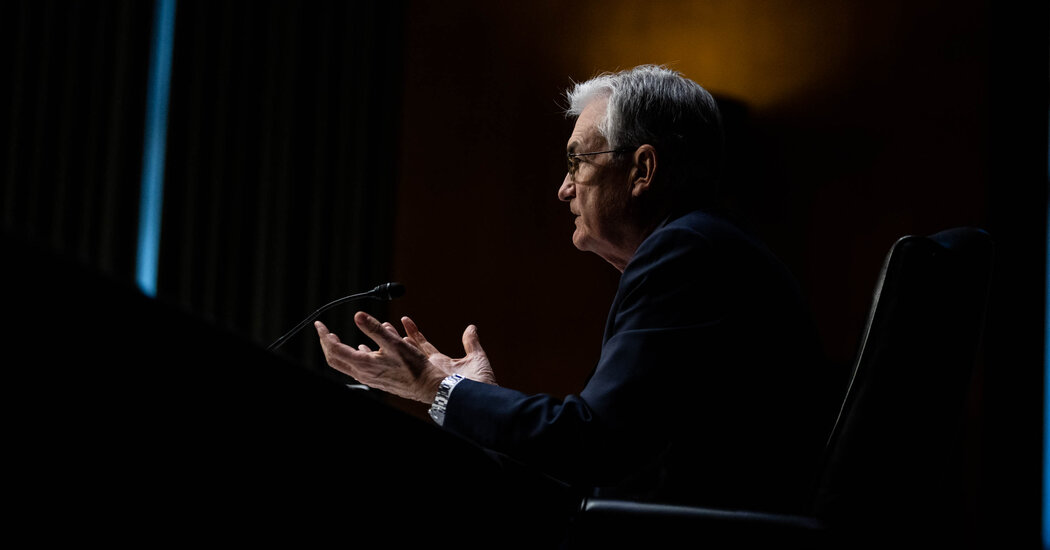
Federal Reserve policymakers on Wednesday said they will cut back on their stimulus more quickly at a moment of rapid inflation and strong economic growth, capping a challenging year with a pronounced policy pivot that could usher in higher interest rates in 2022.
A policy statement released by the central bank detailed a more rapid end to the monthly bond-buying that the Fed has been using throughout the pandemic to keep money chugging through markets and to bolster growth, just as a fresh set of economic projections showed that policymakers expect to raise interest rates three times next year.
When it comes to the bond-buying program, officials are slashing their purchases by twice as much as they had announced last month, a pace that would put them on track to end the program altogether in March. That decision came “in light of inflation developments and the further improvement in the labor market,” according to the policy statement.
Fed Chair Jerome H. Powell, speaking at a news conference following the Fed’s meeting, said a “strengthening labor market and elevated inflation pressures” prompted the central bank to speed up the reductions in asset purchases.
“Economic developments and changes in the outlook warrant this evolution,” Mr. Powell said. He noted that supply chain disruptions have been larger and lasted longer than expected and said price gains will likely continue well into next year.
Ending the bond-buying program sooner will position the central bank to more quickly raise its policy interest rate — the Fed’s more traditional and more powerful tool — if officials decide that doing so is necessary to keep inflation under control. The Fed’s economic projections suggested a faster pace of rate increases as the economy recovers. Rates are currently set near-zero and officials project rates to stand at 2.1 percent at the end of 2024.
“With inflation having exceeded 2 percent for some time, the committee expects it will be appropriate to maintain this target range until labor market conditions have reached levels consistent with the committee’s assessments of maximum employment,” the Fed said in its new statement — putting the onus for rate increases squarely on labor market progress.
Mr. Powell, in his remarks, suggested that the labor market was getting closer to meeting that test.
“In my view we are making rapid progress toward maximum employment,” Mr. Powell said.
By slowing bond-buying and moving decisively toward raising borrowing costs, the Fed is adding less juice to the economic expansion and completing a pivot toward inflation-fighting mode. While officials spent much of the year laying out a patient path for winding down their pandemic-era help for the economy, they have turned more proactive in recent weeks as they have become more worried that a burst in prices this year could linger.
What to Know About Inflation in the U.S.
Consumer prices climbed 6.8 percent in November from a year earlier, the quickest pace of increase since 1982. The Fed’s preferred inflation gauge has shown slightly slower gains but has also moved up sharply.
Mr. Powell said that a quicker conclusion to bond-buying will better position the Fed to react to a range of possible economic outcomes.
Asked if there would be a big gap between when bond buying ended and when rate increases began, as there was during the last economic rebound, Mr. Powell said that the situation is different this time.
“The economy is so much stronger now,” Mr. Powell said, later adding that “there wouldn’t be the need for that kind of long delay.”
Fed officials initially expected a pop in prices this year to fade. Instead, pressures have broadened beyond goods affected by the pandemic, which have fallen victim to tangled supply chains, and into rent and shelter. In those big categories, upward trends can prove more lasting. Wages are climbing, as are consumer inflation expectations, which could also help price increases to persist.
The Fed has been watching the evidence accumulate warily, though most officials still hold out hope that inflation will fade back toward their 2 percent annual average goal as global shipping routes clear through backlogs, factory production increases to meet demand, and consumers shift toward more normal spending patterns after scrambling to buy couches, cars and stationary bikes during the pandemic.
But officials had begun to back away from helping the economy so much, announcing the initial plan to slow their bond-buying program following their November meeting. Mr. Powell signaled late last month and early in December that the central bank was increasingly focused on managing the risk that rapid price gains might linger — teeing up the central bank’s shift.
“I think the risk of higher inflation has increased,” Mr. Powell said while testifying before Congress in late November.
The transition became official on Wednesday.
“They are revising up inflation, revising down unemployment, and as a result they’re pushing up the path for interest rates,” Neil Dutta, head of U.S. economics at Renaissance Macro, said in reaction to the news. “It’s a bit of a 180 on Powell’s part.”
Fed officials have taken heart in the speed of the labor market recovery. The jobless rate has fallen to 4.2 percent, down sharply from the double-digits heights it reached early in the pandemic. Officials now expect unemployment to fall to 3.5 percent — matching its very low level headed into the pandemic — by the end of next year, their updated economic projections showed.
“Job gains have been solid in recent months, and the unemployment rate has declined substantially,” the Fed said in its new policy statement.
Still, many people remain out of the labor market — some because they have retired, but others because of virus fears or a lack of child care. That is making judging how close the economy is to the Fed’s goal of “maximum employment” a more complicated task.
Mr. Powell at times has suggested that full employment could be reached next year, but he also has expressed uncertainty around that call.
“I think there’s room for a whole lot of humility here as we try to think about what maximum employment would be,” he said at a news conference in November.




